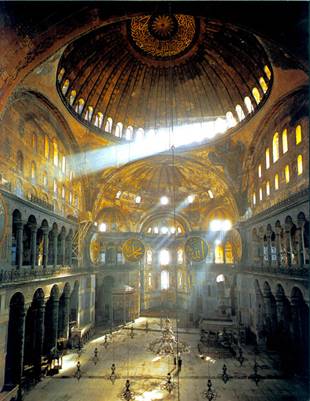Module 9: Engineering and Design in ASEAN
Table of Contents
Reading Text & Presentation
9.2 Design ideas and features
In this part we will consider 3 of the design areas mentioned in the introduction: architecture, fashion, and landscape architecture.
9.2.1 Design ideas and features in architecture
Architectural design has been around for centuries. Some areas and cities are rich in it, and tourists often visit these places specifically to admire the architecture. Nowadays, ancient and modern can often be seen side by side.
Part 1 Ancient Greece and Rome
The architecture of Ancient Greece and Rome is probably some of the best known. It dates back thousands of years and features theatres, temples and other religious buildings. Ancient Greek architecture is considered to have highly formalized characteristics of structure and decoration. Some seem to have been conceived as sculptural entities; often raised on high ground where itsproportions and light effects on the surfaces can be clearly seen. Formal vocabulary developed regarding the division of architectural styles: Doric, Ionic, and Corinthian. These were to be seen reflected in theWestern architecture of later periods.Ancient Roman architecture grew out of Greek and its influence in Italy remains unbroken. The Renaissance periods of the 15th and 17th centuries and the later Classical period kept alive the precise forms and details, and the concept of beauty based on balance and proportion. There were also the Neoclassical and Greek Revival architectural periods,which closely followed and adapted Ancient Greek styles.
The basis of the classic Greek buildings was ‘column and lintel’ with the wide roofs also supported by columns. The top part of the column on which the lintel (and the roof) rest is called the ‘capital’, and the neck part leading down to the main column the ‘echinus’. It is the different styles of the capital and echinus that make the three classic Greek ‘orders’ recognisable. The older, Doric, order has a simple curved echinus. The later, Ionic, order has a more elaborately decorated echinus, and the Corinthian has foliate decoration on the echinus. The Doric order developed on mainland Greece and spread to Italy. It co-existed with the Ionic order in different parts of Greece, and it was the later Corinthian order that was popularized by the Romans.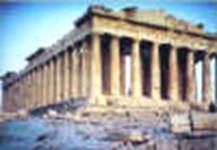
Ancient Roman architecture is famous for its arches, which often featured in the Roman aqueducts and the Colosseum, and its vaulted domes seen in public baths and basilicas. They started to use concrete to supplant marble and designed under-floor heating systems.
< Parthenon, Greece 447 BC
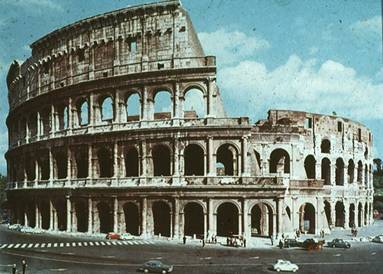
Part 2 Domes and Arches
Domes and arches became very popular features in the design of buildings. There are some world-famous buildings which have large domes: St. Paul’s Cathedral in London, the Taj Mahal in Agra, and Hagia Sofia in Istanbul. The latter is an example of Byzantine architecture, which grew from Ottoman architecture; also well-known for its domes.
A dome is similar in structure to an arch, and thus, like arches, they have a great deal of strength and can span large open spaces without interior supports. This, coupled with enhanced acoustic qualities has made them popular with building designers.
Arches in the Roman architecture of the Colosseum in Rome >
Illustration of a simple arch with its component parts(Source: See References)
|
The image shows the domes, arches and columns in the Hagia Sophia Cathedral of Istanbul. (Source: See References) |
Because it was the religious institutions that often had the wealth, they could afford to pay designers to come up with ideas for more grand structures.
Part 3 Gothic Architecture
Another development from the Romanesque architecture was the design of Gothic architecture. These designs were often for tall, sinister-looking churches. Some of the design features include ribbed vault, pointed arch, and flying buttress.
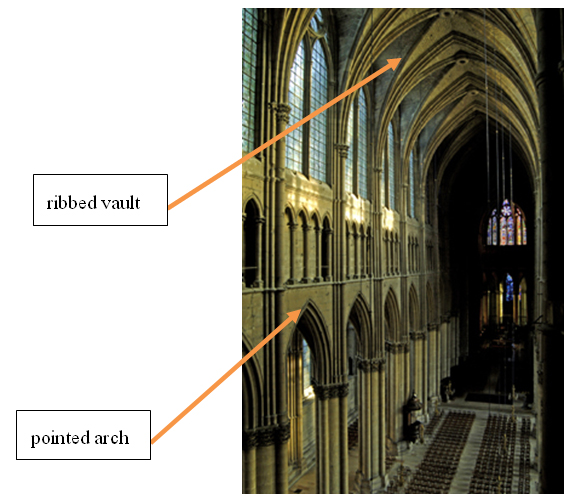
Notre Dame de Reims Cathedral, Paris (Source: See References)
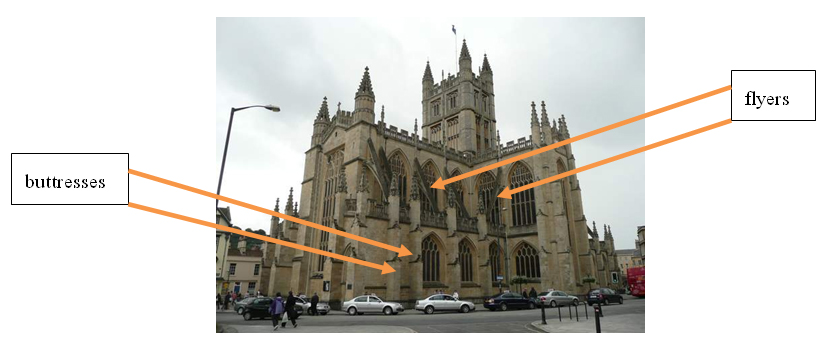
Flying buttresses of Bath Abbey, Bath UK (Source: See References)
Another beautiful architectural design feature that gained popularity during this period was stained glass windows.
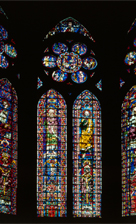
Notre Dame, Paris (Source: See References)
With the industrial revolution, countless new materials appeared for designers to add into their creations, and new machinery and technology meant that even construction methods that had seemed impossible just a few decades earlier were now within reach. Imagination is the only limit of the modern architecture designer.




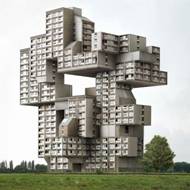

Modern architectural designs (Source: See References)

